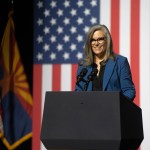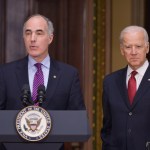Much has been made of Occupy Wall Street’s use of social media, both by the protesters themselves, by the media, even government officials.
But beyond the movement’s reliance on live-streaming video, Facebook and Twitter and other social tools, its worth pointing out that its adherents have turned to several other, much older technologies, albeit with digital flourishes.
Protestors Create A Library In The Park
The movement on Sunday created a new WordPress website and put out a call for volunteer librarians to staff and donate books to its “People’s Library,” one of the many, growing subcategories, or “working groups,” that have been created within the encampment at Zuccotti Square. Of course, the most popular book so far is Howard Zinn’s revisionist “A People’s History of the United States.” As the inaugural post explains:
Right now need many different kinds of donations. We need books of resistance and people’s history. We need economics and finance books. We need contemporary philosophy and ecology. We need DIY books. We especially need non-English books and materials for low literacy readers. Print outs of free stuff from the web are valuable to us- I personally handed out at least two copies of Citizens United on Saturday before the march. Also, we’re a free lending library operating on the honors system, so our materials come and go rather rapidly; multiple copies are always welcome. On that note, we need as many copies of “A People’s History of the United States” by Zinn as possible. We simply can’t keep a copy in stock as there are so many people who want to read it.
Already, the People’s Library has begun the valuable service of organizing some of the important Occupy Wall Street documents, linking to its “Principles of Solidarity,” and “Declaration of the Occupation of New York City,” and “General Assembly Guide,” which explains to newcomers how to participate in the large group discussions using the movement’s organic system of hand signals.
As one Mandy Henk, a volunteer librarian from Indiana told the Library Journal of her decision to join the movement: “If these brave young people (and not so young people) were asking for members of my profession to come and help build and maintain a library, how could I refuse?…If my professional skills could do some good for people sleeping outside in the cold and rain to affect the kind of change I want to see, why wouldn’t I go? What excuse did I have?”
Making Use of Digital Petitions
Occupy Wall Street has also been quick to make use of the White House’s new online petitions website, “We The People,” which went live on Sept. 22.
The official Occupy Wall Street website on Sept. 24 posted a link to a petition that seeks to “make bribing politicians illegal.” While that broad wording is of course already on the books of the U.S. Code, the Occupy Wall Street protesters actually seek to eliminate lobbying, writing:
“No corporation should be allowed to give campaign contributions to any politician or political party that is involved in writing or voting on legislation that affects them or the industry they profit from…Corporations giving millions of dollars to politicians could not create a more clear conflict of interest in policy making – ITS A BRIBE. If the Administration disagrees we would love to hear why.”
Of course, Congress already tried to limit corporate spending on campaigns, but a landmark 2010 Supreme Court decision equated corporations with individuals, with the upshot being that the government can’t ban spending by corporations in elections because it would violate their First Amendment right to free speech.
At the time, President Obama called the decision “a major victory for big oil, Wall Street banks, health insurance companies and the other powerful interests that marshal their power every day in Washington to drown out the voices of everyday Americans.”
So far, the protestors’ petition has received 3,154 digital signatures. It needs another 1,846 by October 23 in order to receive an official response in writing from the White House, per the website’s terms.
Another two separate Occupy Wall Street digital petitions have also been created, the most successful garnering nearly 8,000 signatures since it was posted on September 23.
It calls for the Obama Administration to “recognize the men and women who are Occupying Wall Street,” and decries the mainstream media for selectively overlooking the protests.
Unfortunately, they are largely being ignored by the media in the United States due to the “small size” of the protests. Note that “small size” has not deterred Fox, CNN and other US news channels/newspapers from covering, and even putting on the front page, Tea Party and other far right protests, some of which have had as little as 100 people (#occupywallst varies from 500-3000)
That petition’s main argument may no longer be valid, given how intensely the mainstream media has covered the protests in the wake of the arrests of 700 protesters on the Brooklyn Bridge on Saturday.
Another petition was launched on Oct 2. It has earned just under 1,000 signatures so far, demanding that the Administration to ““>Make a statement to the Occupy Together movement and let us know our message is being received by our elected officials.”
Furthermore, it makes an appeal to Obama as members of his electorate, marking one of the first occasions the “We Are The 99 Percent” has chosen to overtly declare its political affiliations (until now, the movement’s adherents have steadfastly resisted categorization, saying only that they represent the majority.)
As the petition explains:
“The protestors, many of whom backed the Obama Administration in the 2008 Presidential elections, need recognition by our elected officials and reassurance that action is being taken to end the corporate corruption, to have our basic rights restored, and to end the concentration of power to unelected officials.
We, the people, need assurance that the officials whom we have elected have our best interests at mind.”
The “We The People,” site allows anyone over the age of 13 to create and circulate a petition on a wide range of pre-determined topics, customizing the specific wording almost limitlessly (the White House website filters out ” profanity or abusive or degrading slurs or epithets”).
Then, the creators are given a link to their petitions, which they can send out on any Web service of their choosing to encourage other Web users to sign their own digital signatures.
Initially, the White House promised to respond in writing to every petition that received over 5,000 digital signatures within 30 days, but the White House quickly upped that up to 25,000 signatures after receiving a glut of petitions that easily crossed the 5,000 threshold mark, most of them about decriminalizing marijuana.
Finally, as for more contemporary tech, namely the mobile phone, Tech President talked to several activists and experts, who uniformly encouraged participants in the protest to leave their smartphones at home and wipe any phones they had of all data to avoid have them being searched by police.
Correction: This post originally misstated the date that the Occupy Wall Street People’s Library website was created as Wednesday. We apologize for the error.









